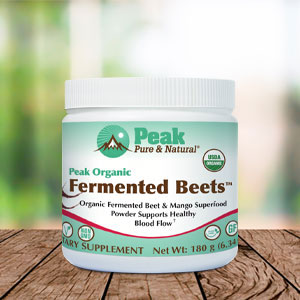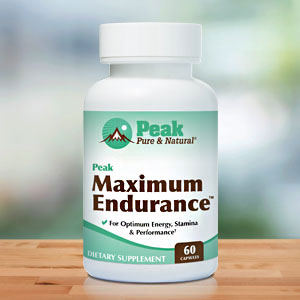Get Easy Health Digest™ in your inbox and don’t miss a thing when you subscribe today. Plus, get the free bonus report, Mother Nature’s Tips, Tricks and Remedies for Cholesterol, Blood Pressure & Blood Sugar as my way of saying welcome to the community!
The hard-to-swallow truth about hardcore HIIT workouts

Do you know what I like most about high-intensity interval training (HIIT)? It packs a serious punch in a short period of time. You can do a 20- to 30-minute session and feel like you got a good workout in for the day. You’re sweaty. Your muscles feel tired. So, who needs an hour at the gym?
But the efficiency factor aside, HIIT workouts can be incredibly hard. I’ve done a few that were so hard that I struggled to finish them… even though the workout was only 20 minutes (or less in some cases!)
That’s because you’re supposed to do HIIT workouts at your maximum intensity level. And exercising at your maximum intensity level makes you a huffing, puffing sweaty mess — whether you’re doing it for two minutes or 20 minutes.
But here’s the thing I’ve always wondered about HIIT: Is the pain worth the gain? Will pushing yourself to the max pay off more in the end?
And a new study shows that — in the case of HIIT workouts — the answer could be no.
Working out extra hard may not have extra benefits
A recent study from the University of Alberta shows that moderate-intensity exercise has the same physical benefits as maximum intensity exercise.
The small study included eight people who completed a circuit-based workout at maximum intensity and then another at a moderate intensity five to seven days later. Here’s what researchers noticed…
When people started at maximum intensity, they became tired and slowed down later in the workout. When people started at a moderate intensity, however, they were able to sustain their intensity level better. That means, by the end of the session, people working out at maximum intensity were completing the same amount of reps as they did at moderate intensity. It evened out.
Researchers also noticed that when people performed maximum intensity exercise, they produced more lactate (aka lactic acid). This causes higher acidity in your muscles and can even bring on lactic acidosis (muscle aches, burning, rapid breathing, nausea, stomach pain) in extreme cases.
All in all, researchers say the risks of pushing yourself to the max during exercise may outweigh the benefits. Past evidence shows that it puts you at a higher risk for injury and may even impair your immune system. Exercising too hard has been shown to cause fatigue and negative emotions as well. So, is it really worth it?
Stay safe during hard HIIT workouts
This study is far from the final word on maximum intensity workouts like HIIT. It only included eight people, after all. But it raises some good points…
Is working ourselves to the max (even for a short time) really healthy?
Related: 5 ways to burn more calories doing less exercise
HIIT workouts help you burn more fat (even when you stop working out), increase your metabolism and build muscle. But on the flip side, most fitness experts (including the ones who conducted this study) agree that working out at your max intensity raises your risk of hurting yourself.
Intense workouts also cause your body to release stress hormones like cortisol. When you’re putting out too much cortisol, it messes up your hormonal balance, increases your risk for health issues like diabetes and makes it harder to lose weight.
And on that note, I have a confession. When I do HIIT workouts, I often only do them at a moderate intensity. I choose low-impact modifications, so I don’t push myself to that heart-pumping-out of-my-chest place. Why?
I have chronic health issues, and I find that working out too intensely makes my symptoms worse rather than better. When I do HIIT workouts at a moderate pace, I still break a sweat, get sore muscles and feel that after-workout glow. So, I’m okay with toning things down a notch.
Am I experiencing all the proven benefits of HIIT when I do it at a moderate intensity? That I don’t know. So, if you want to make sure you’re experiencing all the benefits of HIIT, you may decide to keep pushing yourself to the max during your workouts. If you do, I have a few suggestions to keep you safe:
- Always warm-up. It’s not a great idea to go from sitting at a desk all day to doing a set of fast-paced burpees. Your muscles need time to warm up. So, make sure you do a set of less vigorous warm-up exercises before you jump into a full-blown HIIT session.
- Learn proper form. I’m a huge fan of YouTube workout videos. But the downside of getting your fitness instruction online is there’s no one to correct your form. If you’re back is arched when it should be straight or your knee is bent a way it shouldn’t be bent, you could hurt yourself. So, whether you’re just starting out on your fitness journey or you’ve been on it for a while, take time to learn proper form for all the exercises you do regularly. You could do that by hiring a personal trainer for a few sessions just to get the basics solidly implanted in your brain.
- Embrace recovery. Moderation is important when it comes to HIIT workouts, just like everything else. Don’t do workouts that burn you out every single day. Do hardcore HIIT workouts three to four times per week max. The other days can be recovery days where you do less intense exercise like yoga or flexibility exercises.
Sources:
- High-intensity interval training not worth the extra effort, study suggests — MedicalXpress
- Is Perceived Exertion a Useful Indicator of the Metabolic and Cardiovascular Responses to a Metabolic Conditioning Session of Functional Fitness? — Sports
- Why Does Lactic Acid Build Up in Muscles? And Why Does It Cause Soreness? — Scientific American
- HIIT: is the fitness scene’s biggest fad doing more harm than good? — The Telegraph
- 8 Benefits of High-Intensity Interval Training (HIIT) — Shape
- Do the Risks of HIIT Outweigh the Benefits? — Shape














